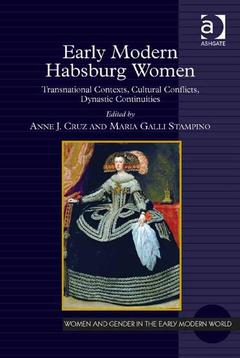As the first comprehensive volume devoted entirely to women of both the Spanish and Austrian Habsburg royal dynasties spanning the sixteenth and the seventeenth centuries, this interdisciplinary collection illuminates their complex and often contradictory political functions and their interrelations across early modern national borders. The essays in this volume investigate the lives of six Habsburg women who, as queens consort and queen regent, duchesses, a vicereine, and a nun, left an indelible mark on the diplomatic and cultural map of early modern Europe. Contributors examine the national and transnational impact of these notable women through their biographies, and explore how they transferred their cultural, religious, and political traditions as the women moved from one court to another. Early Modern Habsburg Women investigates the complex lives of Philip II?s daughter, the Infanta Catalina Micaela (1567-1597); her daughter, Margherita of Savoy, Vicereine of Portugal (1589-1655); and Maria Maddalena of Austria, Grand Duchess of Florence (1589-1631). The second generation of Habsburg women that the volume addresses includes Philip IV?s first wife, Isabel of Borbón (1602-1644), who became a Habsburg by marriage; Rudolph II?s daughter, Sor Ana Dorotea (1611-1694), the only Habsburg nun in the collection; and Philip IV?s second wife, Mariana of Austria (1634-1696), queen regent and mother to the last Spanish Habsburg. Through archival documents, pictorial and historical accounts, literature, and correspondence, as well as cultural artifacts such as paintings, jewelry, and garments, this volume brings to light the impact of Habsburg women in the broader historical, political, and cultural contexts. The essays fill a scholarly need by covering various phases of the lives of early modern royal women, who often struggled to sustain their family loyalty while at the service of a foreign court, even when protecting and preparing their heirs for rule a




